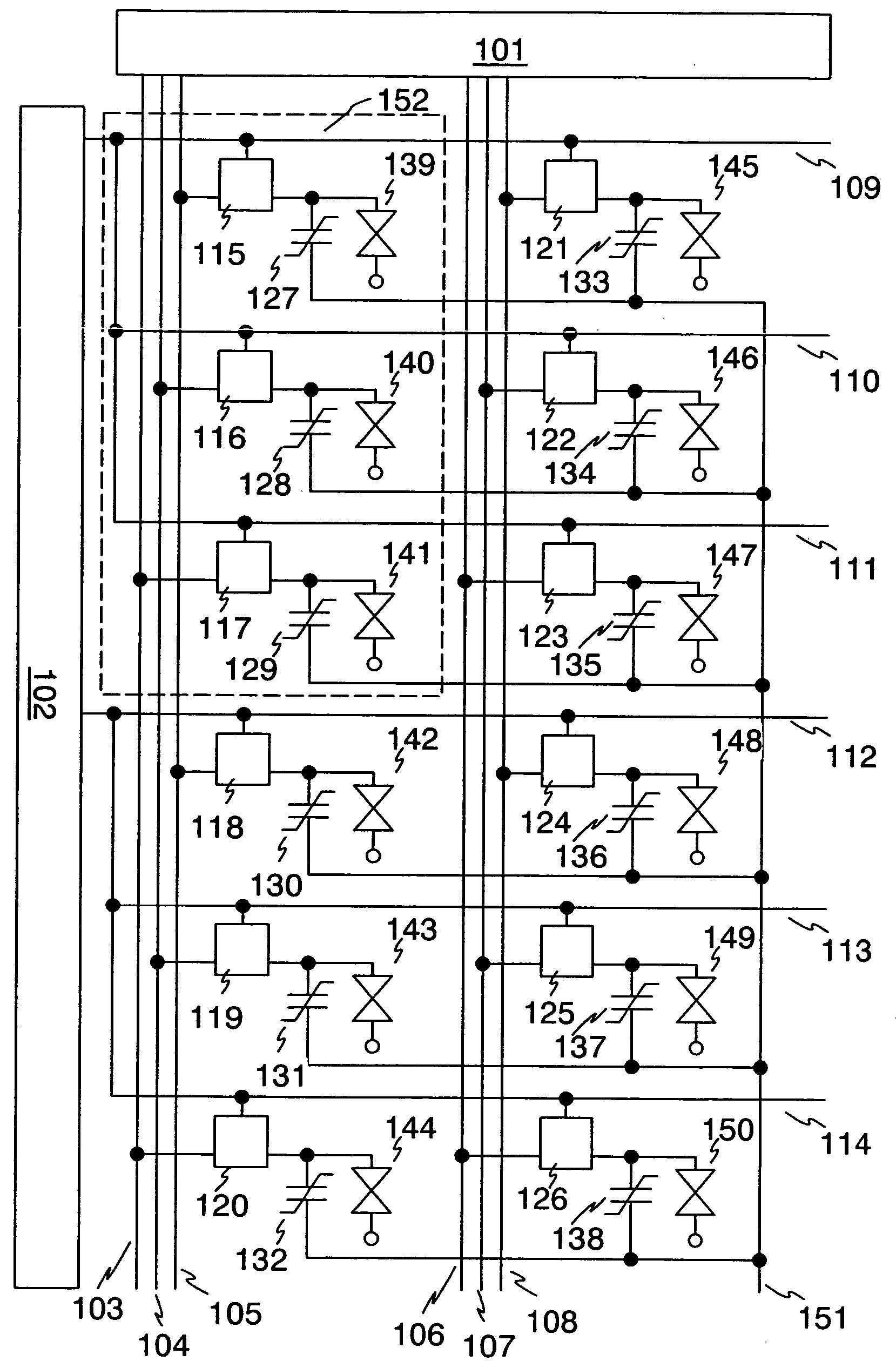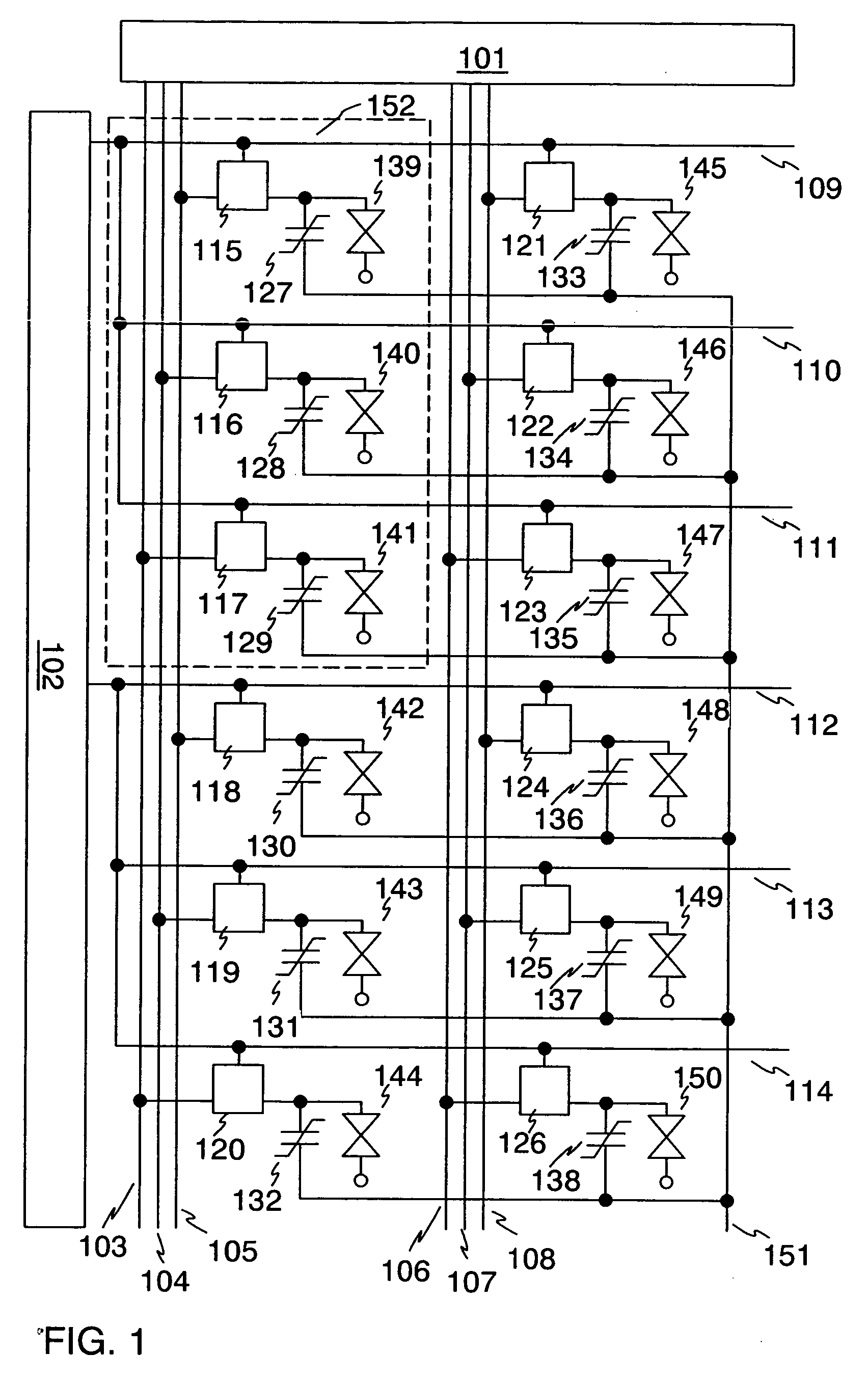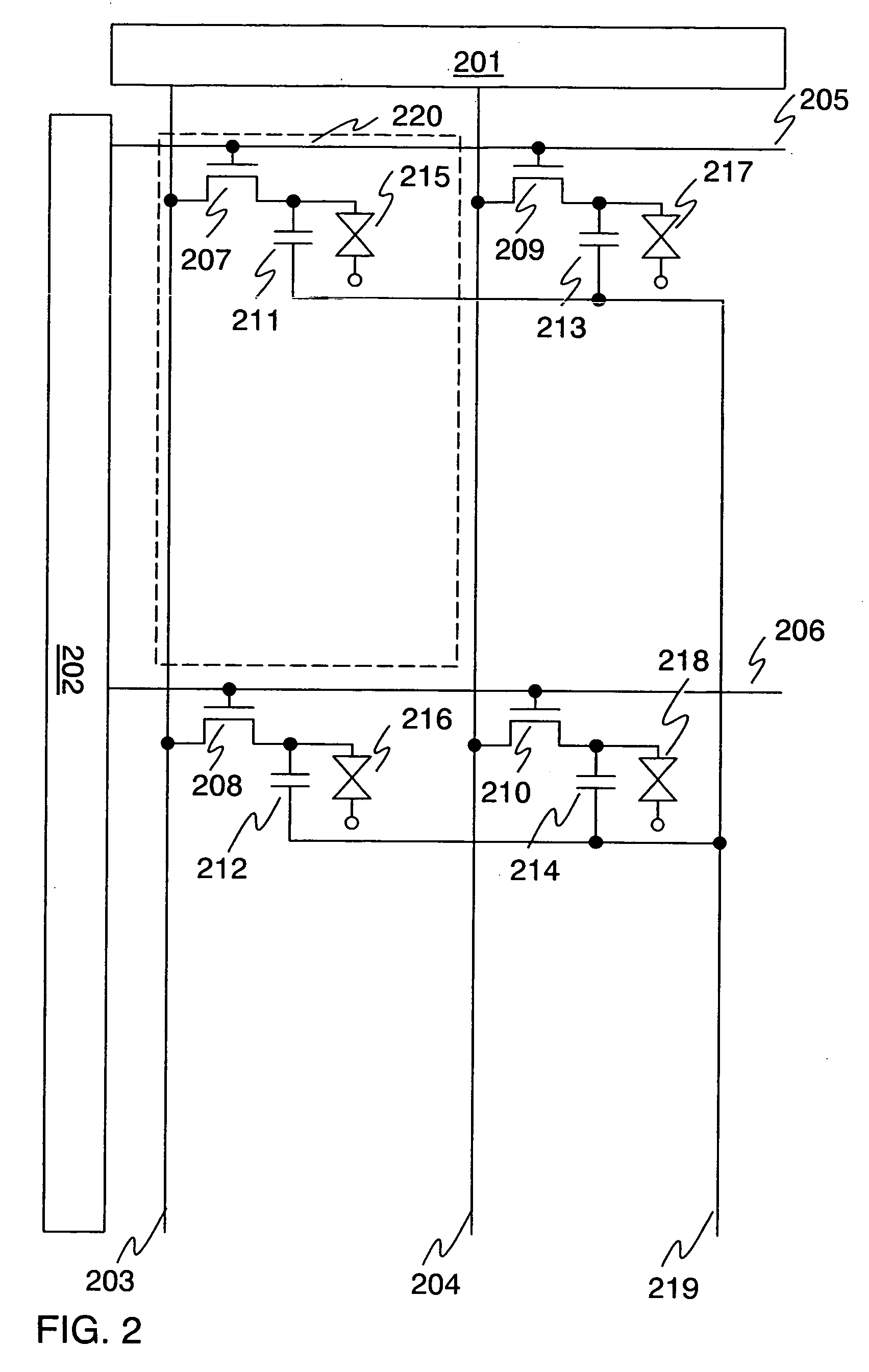Display device
a display device and display technology, applied in static indicating devices, instruments, non-linear optics, etc., can solve the problems of power consumption increase, voltage required for driving liquid crystals cannot be stored, and capacitor lines may not necessarily be provided
- Summary
- Abstract
- Description
- Claims
- Application Information
AI Technical Summary
Benefits of technology
Problems solved by technology
Method used
Image
Examples
embodiment 1
[0056] [Embodiment 1]
[0057] Shown in FIG. 4 is a configuration of an embodiment of the invention. In this embodiment, switching elements are formed of TFTs. Note that, a 3-bit gradation is taken as an example in FIG. 4, however, the invention is not exclusively limited to 3-bit. One pixel 452 comprises three TFTs and three nonvolatile memory elements. ON / OFF operations of the TFTs are controlled by gate signal lines. One terminal of each nonvolatile memory element is connected to each TFT and to each liquid crystal element via a pixel electrode (not shown in the figure), and the other terminal thereof is connected to a common electrode 451. Operation thereof is explained below.
[0058] Digital video signals are outputted from a source signal line driver circuit 401 to source signal lines 403 to 408. When gate signal lines 409 to 411 are selected by a gate signal line driver circuit 402, TFTs 415 to 417 and 421 to 423 are turned ON and the digital video signals from the source signal l...
embodiment 2
[0063] [Embodiment 2]
[0064] Shown in FIG. 5 is a configuration of an embodiment of the invention. This embodiment is different from Embodiment 1 in that one source signal line is provided corresponding to one pixel column. Note that, a 3-bit gradation is taken as an example in FIG. 5, however, the invention is not exclusively limited to 3-bit. One pixel 548 comprises three TFTs and three nonvolatile memory elements. ON / OFF operations of the TFTs are controlled by gate signal lines. One terminal of each nonvolatile memory element is connected to each TFT and to each liquid crystal element via a pixel electrode (not shown in the figure), and the other terminal thereof is connected to a common electrode 547. Operation thereof is explained below.
[0065] Digital video signals are outputted from a source signal line driver circuit 501 to source signal lines 503 and 504. When a gate signal line 505 is selected by a gate signal line driver circuit 502, TFTs 515 and 517 are turned ON and the ...
embodiment 3
[0069] [Embodiment 3]
[0070] Shown in FIG. 6 is an embodiment of a source signal line driver circuit which corresponds to the pixel configuration shown in Embodiment 1. In FIG. 6, the source signal line driver circuit comprises a shift register 601, a 1st latch circuit 614, and a 2nd latch circuit 615. Operation of the source signal line driver circuit is explained below.
[0071] When output pulses from the shift register 601 are inputted to latch circuits 602 to 604, digital video signals from a video signal line 616 are stored in the latch circuits 602 to 604. Subsequently, when output pulses from the shift register 601 are inputted to latch circuits 608 to 610, digital video signals from the video signal line 616 are stored in the latch circuits 608 to 610. In this manner, output pulses from the shift register 601 are sequentially scanned and video signals corresponding to one line are stored in the 1st latch circuit 614. Then, before an image of a succeeding line is displayed, latc...
PUM
 Login to View More
Login to View More Abstract
Description
Claims
Application Information
 Login to View More
Login to View More - R&D
- Intellectual Property
- Life Sciences
- Materials
- Tech Scout
- Unparalleled Data Quality
- Higher Quality Content
- 60% Fewer Hallucinations
Browse by: Latest US Patents, China's latest patents, Technical Efficacy Thesaurus, Application Domain, Technology Topic, Popular Technical Reports.
© 2025 PatSnap. All rights reserved.Legal|Privacy policy|Modern Slavery Act Transparency Statement|Sitemap|About US| Contact US: help@patsnap.com



